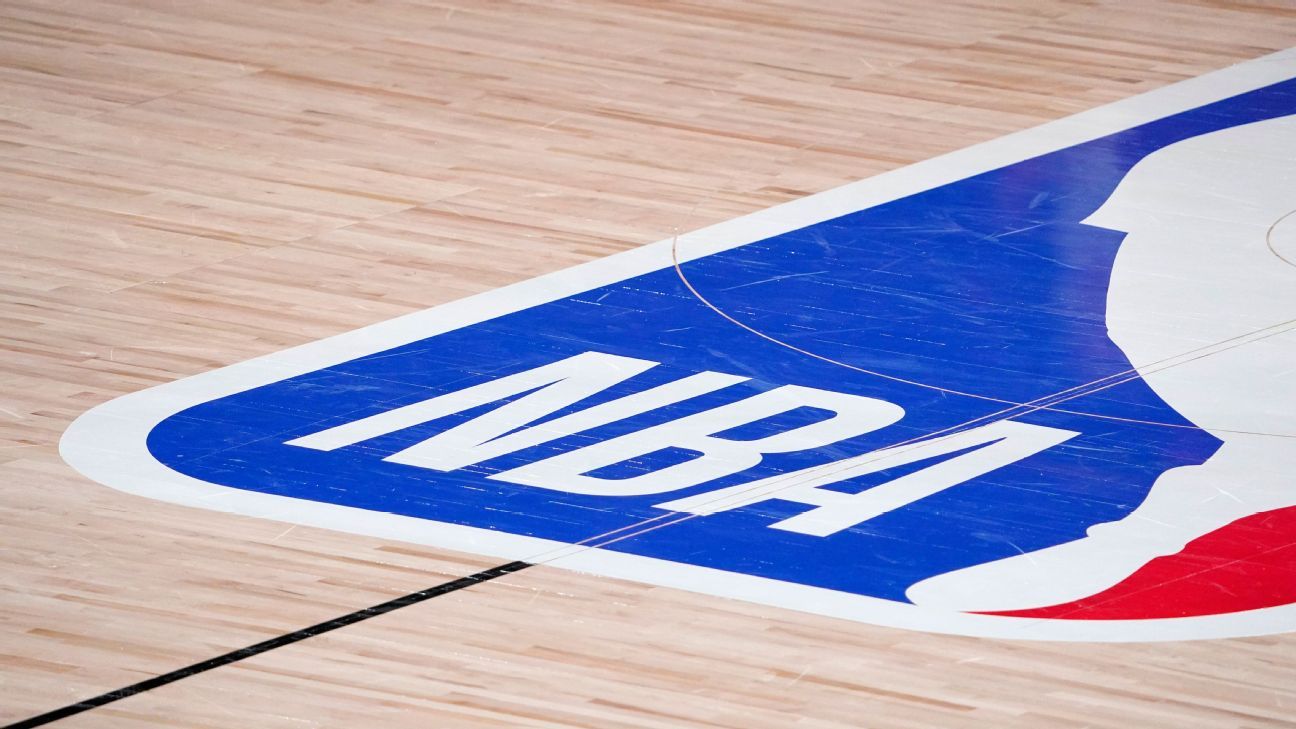As the NBA tightened coronavirus protocols to try to preserve a season teetering amid positive tests, thinning rosters and game postponements, the league made a dramatic change that most franchises had wanted all along: the closing off of rooms to non-team guests in road hotels.
The NBA and National Basketball Players Association on Tuesday reached agreement on several more revisions to policy, including the league further limiting movement for players and staffs on road trips. The league is no longer allowing players and staff to leave hotels for non-team activities, and it is eliminating visitors to hotel rooms, which one GM had told ESPN had been “the Mack truck driving through all our protocols.”
Players were previously allowed to have up to two guests in hotel rooms, including those who were family members and long-standing personal friends.
“No one wants to see more restrictions imposed. No one also wants to see the infection rate increase if there are steps we can take to mitigate the risk,” NBPA executive director Michele Roberts said. “Our experts have concluded that these new procedures will add to our arsenal of weapons against the virus. … It would be irresponsible and unacceptable to not employ new measures aimed at better promoting and protecting our players’ safety.”
The NBA has had to postpone four games this week, including three involving the Boston Celtics, who are unable to muster eight eligible players because of COVID-19 issues. Boston, Miami, Philadelphia, Dallas, Washington and Chicago are among teams that have had significant losses of active players due to positive tests and contact tracing.
“All I can do is hope,” Sixers coach Doc Rivers said Tuesday. “The league, the way they ran the bubble was fantastic, and so you’re just hoping this works. … We are in cities. And, so, we just have to do our best, everyone. Obviously, I think everyone is doing their best, and we’re still getting it, so we have to be more careful.”
Beyond the changes involving guests on the road, the two sides agreed to several other things to tighten the protocols amid several teams having large clusters of players testing positive for COVID-19 or being caught up in contact tracing as a result of those positive tests.
“I’m all for it. Anything we possibly can do to ramp up the safety,” Heat coach Erik Spoelstra said Tuesday. “… Just because we want to proceed with our profession doesn’t mean that there isn’t a reality of what’s going on in the world. The virus is very much out there, and I think we have to do everything we possibly can to adhere to protocols, to add new protocols. To be even more vigilant than we have been, more disciplined. To be able to proceed and do it in a safe manner.”
Until at least Jan. 26, when teams are in their home markets, both players and staff must remain at home unless they are going to a team-related activity, exercising outside, performing essential activities or “as a result of extraordinary circumstances.”
They also are supposed to limit away-from-work interactions to family, household members and personal staff working in their home.
Anyone who regularly visits the home of a player or staff member must have two COVID-19 tests per week. Meanwhile, teams that have either players who tested positive or a high-risk staff member may require players and team staff to undergo five consecutive days of twice-a-day lab-based testing, in addition to daily point-of-care tests.
Also until at least Jan. 26, pregame meetings in the locker room can last no more than 10 minutes. Every other meeting involving players and staff must happen either on the court, in a league-approved space or in an arena in a room big enough for everyone involved to be at least 6 feet apart. Everyone at these meetings must wear masks at all times.
Players are now not allowed to arrive at the arena more than three hours before tip on game days. Meanwhile, pregame and postgame interactions with players must be limited to elbow or fist bumps; extended socializing should be avoided; and 6 feet of distance should be maintained as much as possible.
“I’m not that concerned with some of the things as far as on the floor, no chest bumps or whatever,” Rivers said. “That’s not going to hold anyway — guys are going to get excited, and I don’t think that’s the reason it is spreading. It’s coming from the outside to the inside, and so we just have to be more vigilant when we are away from arenas and practice facilities, because I think that’s the safest place you can be.
“It’s when we walk outside that the real world comes into our bubble.”
On team flights, teams now must structure their seating charts on planes to mimic their seating charts for the benches during games, while all treatment sessions at hotels — including massages and physical therapy — need to occur in large, open spaces and with 12 feet between stations. These interactions also require both masks and face shields.
Players now also must wear masks on the bench at all times. There will be a cool-down period when players check out of a game, with a designated area where they don’t immediately need to wear a mask. However, once players have cooled down, they have to go back to their seat and wear a mask until they are put back into the game.
They must also now always wear masks in the locker room, when doing strength and conditioning, and when traveling with anyone who isn’t a household member.
Coaches and staff continue to have to always wear masks during games.
The Associated Press contributed to this report.
